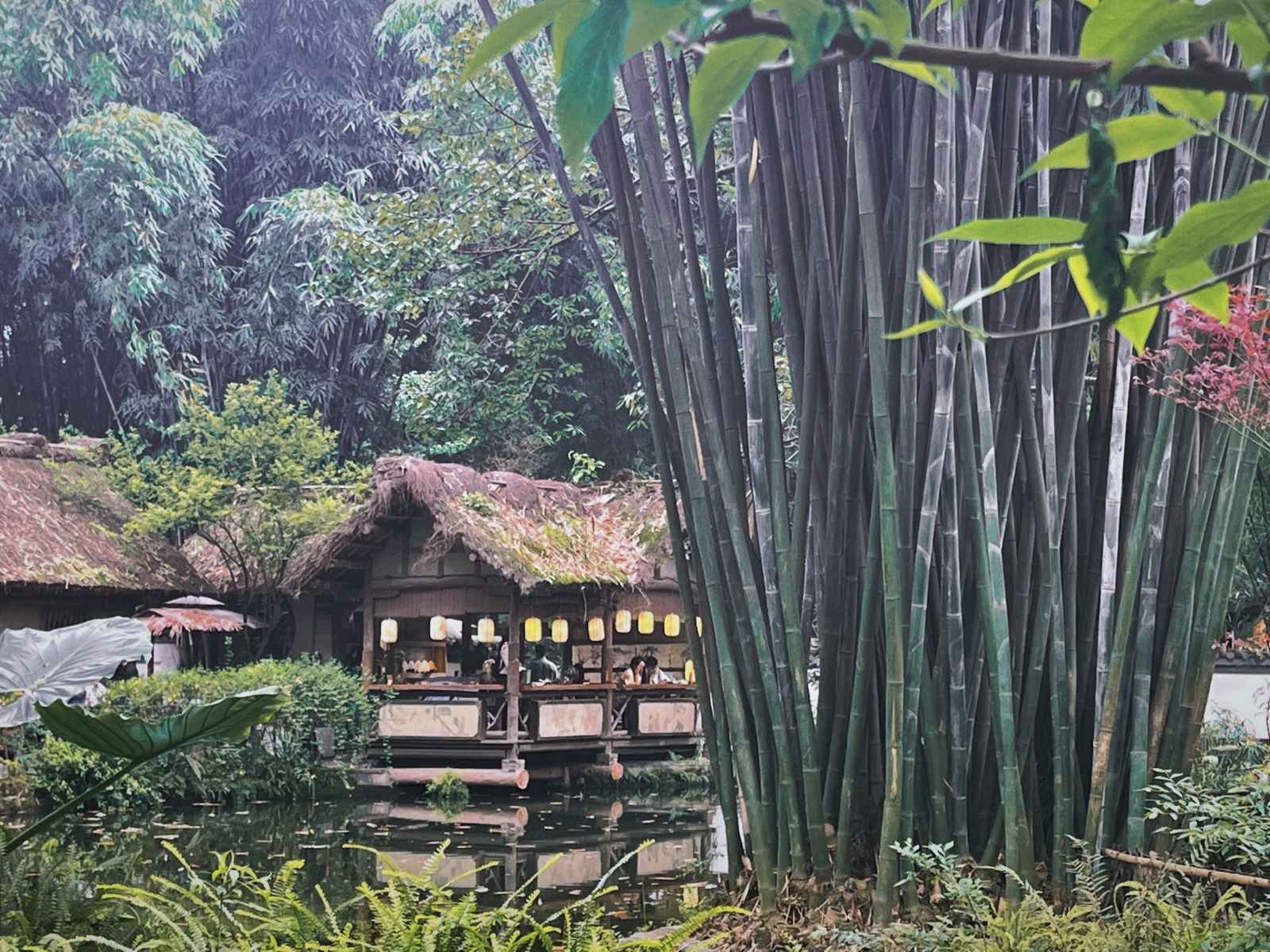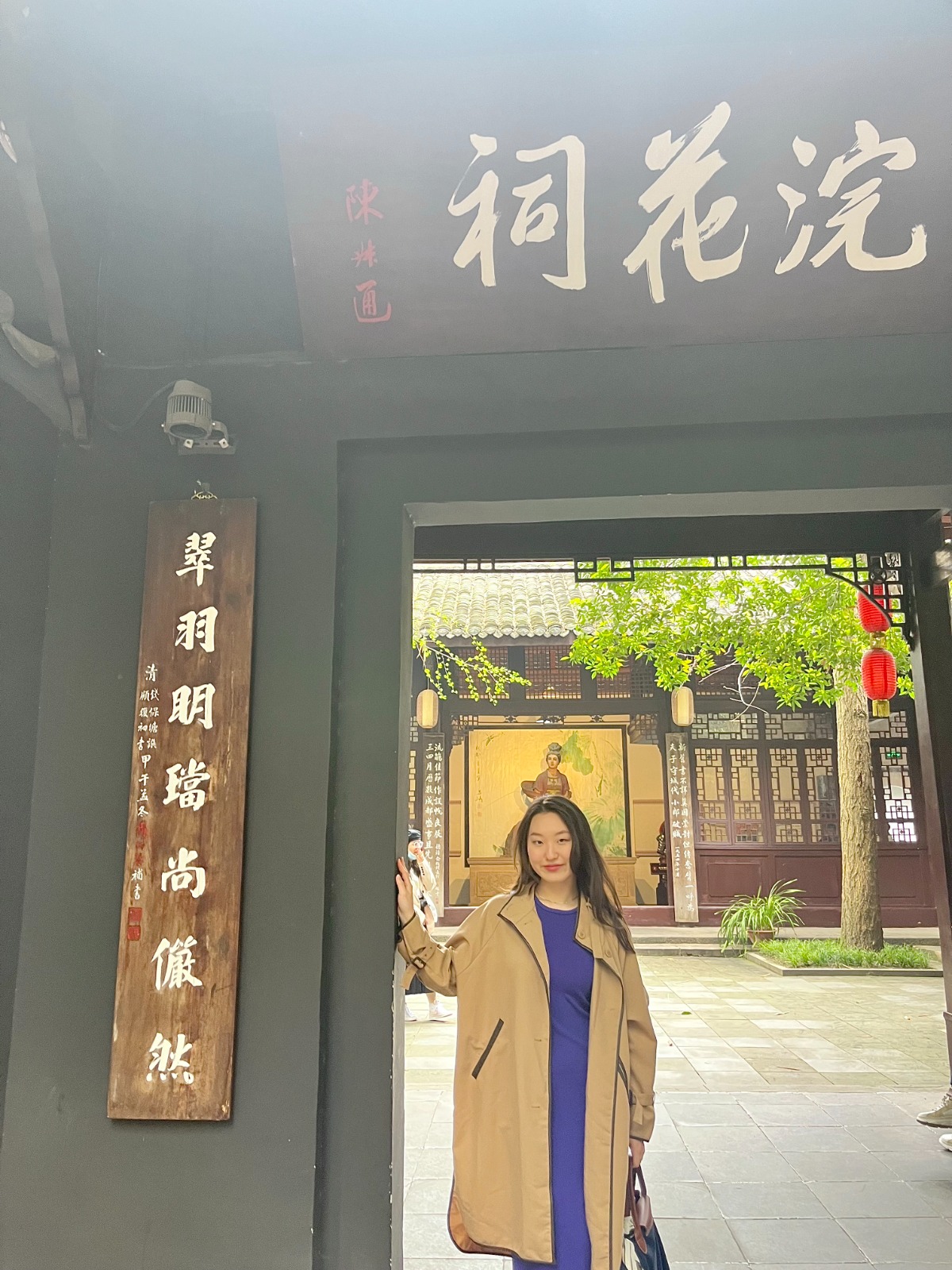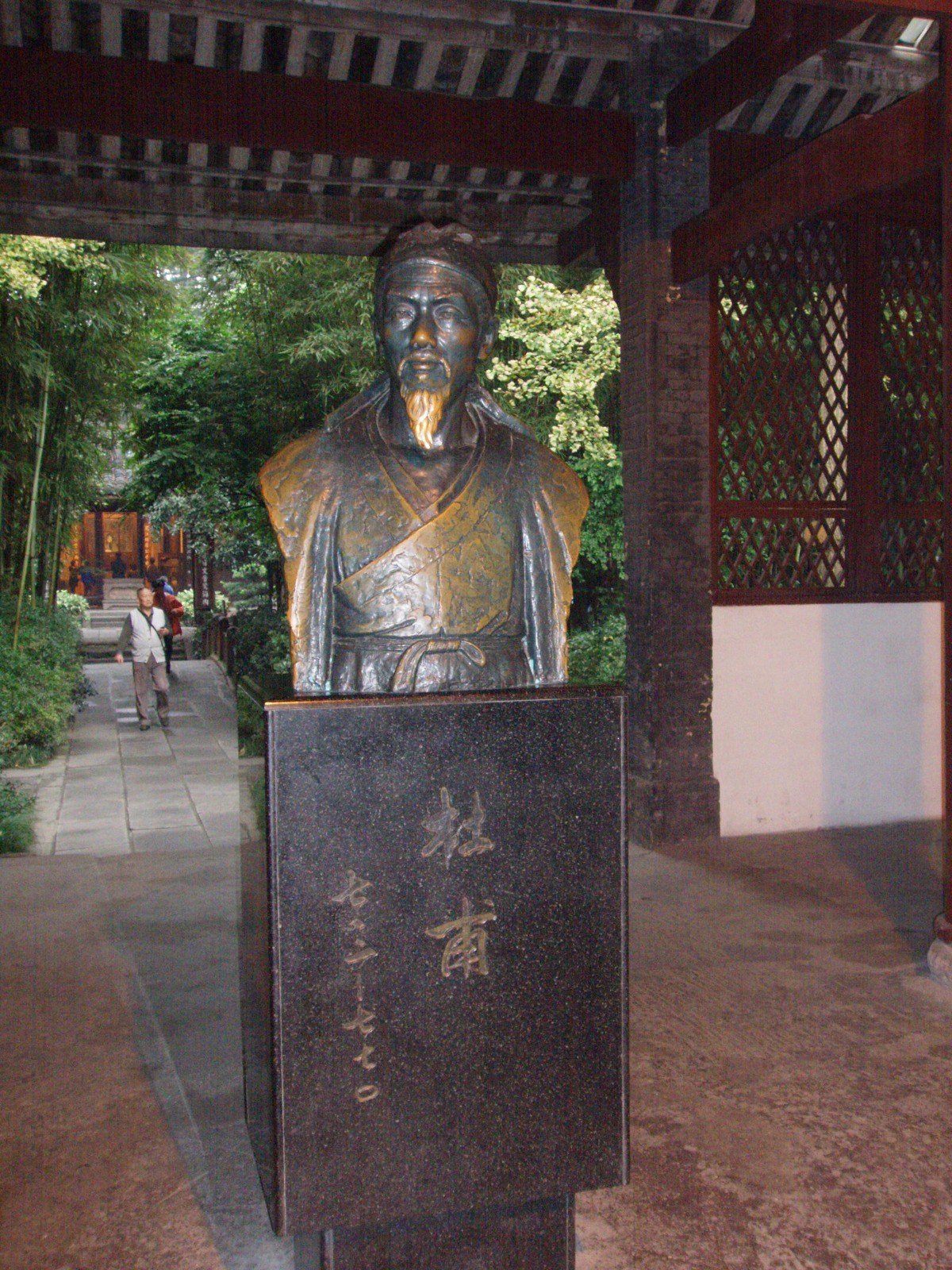Could I get mansions covering ten thousand miles,
I’d house all scholars poor and make them beam with smiles.
In wind and rain these mansions would stand like mountains high.
Alas! Should these houses appear before my eye,
Frozen in my unroofed cot, content I’d die.
— the poem “My Thatched Hut was torn apart by Autumn Wind” (《茅屋為秋風所破歌》) written by Du Fu (杜甫), from a translation by Xu Yuanchang.
The ambitious poem above, full of encouragement and hope, is a masterpiece written by Du Fu, the Chinese “Poet Sage” of the Tang Dynasty, and is a compulsory text for recitation in Chinese school text books.

When I saw the “Du Fu Thatched Cottage” (杜甫草堂) in Chengdu, Sichuan Province (四川成都) for the first time this spring, I understood more deeply the poet’s thoughts while he was writing, and my eyes became misty with tears.
DIFFICULT TIMES
In 758 AD, the Tang Empire had just suffered the massacre and turmoil of the An Lushan Rebellion (安史之亂). The country’s former glory seemed gone forever. The once great Emperor Xuanzong (唐玄宗) was forced to abdicate for mismanagement, and his son Suzong (唐肅宗), who was thought to be an ordinary ruler, took the throne.

Du Fu went from being the Emperor’s well-paid poet to being an exile, and began his life of wandering. During these years, most of his poems were sad descriptions of the situation of the people and soldiers with whom he came into contact.
In 760 AD, taking his family, Du Fu left Gansu (甘肅) for Sichuan after years of itinerant life. With the help of Yan Wu (嚴武), a friend and former colleague who had been appointed governor-general in Chengdu, he finally settled by the Huanhua Xi (浣花溪), which means “Flower Rinsing Stream” in English.

For the next five years, Du and his family lived in the thatched cottage they built here. Although he soon faced financial problems, he wrote many peaceful and leisurely poems, reflecting that this period was not so hard for him.
The poem quoted at the beginning was written during this period, from which we can see that Du Fu was a devoted person who had all the scholars in mind, rather than just himself, even though he was trapped in such a poor situation.

In 765 AD, the poet’s patron Yan Wu died and Du lost his support. He was forced to leave his beloved Chengdu and continued his wanderings in other areas of China.
Soon after, the thatched cottage built by Du Fu was damaged in the wars of the late Tang dynasty.
Later, in the Five Dynasties and Ten Kingdoms period (五代十國), the famous poet Wei Zhuang (韋莊) built a new thatched cottage on the site of Du’s house to commemorate the Poet-Sage.

Since the Song Dynasty, which followed the Tang Dynasty, a statue of Du Fu was erected in the heritage of the cottage, turning the place into the “Temple of Du Fu”. In the Ming and Qing dynasties, local governors and financially successful people took pride in renovating the thatched cottage. Nowadays, the cottage and its surroundings have become a Du Fu-themed scenic spot and museum for tourists.

If you visit the Du Fu Thatched Cottage on a sunny bright day, which is rare in Sichuan Basin, you will find the same distant view that Du Fu enjoyed over a thousand years ago – behind neatly standing modern buildings, you can see a magnificent snow peak called Mount Siguniang (四姑娘山), 6,250 metres high, and 198 miles (319 km) away.
But you may not write a poem as charming as Du Fu’s, in which he said: “My window holds the age-old snowed West Ridge”. (窗含西嶺千秋雪).
Image at the top is artwork from fridayeveryday.

